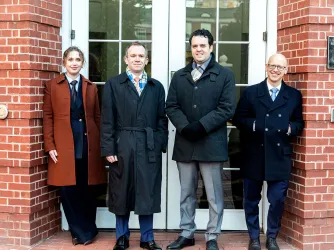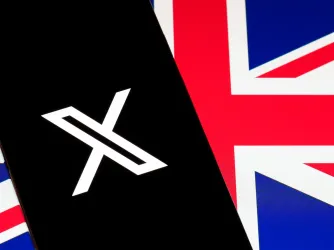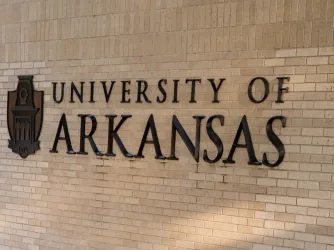Table of Contents
FIRE to Supreme Court: Stop government bullies from intimidating social media platforms

Fred Schilling / Collection of the Supreme Court of the United States
The Supreme Court as composed June 30, 2022 to present. Clockwise from top left: Amy Coney Barrett, Neil Gorsuch, Brett Kavanaugh, Ketanji Brown Jackson, Elena Kagan, Samuel Alito, Chief Justice John Roberts, Clarence Thomas, and Sonia Sotomayor.
In Murthy v. Missouri (formerly referred to as Missouri v. Biden), a federal court of appeals held officials from the White House and other executive agencies violated the First Amendment by urging — from both the bully pulpit and behind the scenes — private social media companies like Facebook and Twitter to block, delete, downgrade, and deplatform users and posts that expressed disfavored views on controversial topics, including COVID-19, election fraud, and Hunter Biden’s laptop. The court blocked various Biden administration officials from continuing to do so. The Biden administration has — for good reason — taken a shellacking for pressuring social media platforms into squelching online speech.
But coercing social media companies based on the content of users’ posts is not unique to the Biden administration. Plenty of Republican officials — including former President Trump and even the two government plaintiffs in this case — are guilty of the same.
On Feb. 9, FIRE filed an amicus curiae — “friend of the court” — brief asking the U.S. Supreme Court to prevent any government official from coercing or significantly encouraging private companies to censor disfavored views, regardless of that official’s political affiliation. FIRE was joined on the filing by the National Coalition Against Censorship and the First Amendment Lawyers Association.
When do officials cross the line from permissible persuasion to unconstitutional coercion?
FIRE filed its brief on Supreme Court review of a decision by the U.S. Court of Appeals for the Fifth Circuit that held several Biden administration officials violated the First Amendment in two ways: First, some officials unlawfully bullied and intimidated social media platforms into changing their content moderation policies, and second, other officials became so entangled with the companies’ moderation processes that those companies were no longer making their own independent decisions. Under Supreme Court precedent the first violation constitutes coercion, and the second significant encouragement of censorship. FIRE’s brief explains to the Court why the Fifth Circuit’s approach strikes the right balance between allowing legal communications between government and social media platforms, and protecting those same platforms from unconstitutional influence.
As FIRE said last year, “The U.S. Court of Appeals for the Fifth Circuit’s decision in Missouri v. Biden is an important victory for freedom of expression” that “strongly reaffirmed the primacy of the First Amendment and the fundamental bar it imposes on government officials seeking to limit what we can say.” We are thus urging the Supreme Court to uphold that decision.

FIRE statement on Fifth Circuit’s decision in Missouri v. Biden
The Fifth Circuit strongly reaffirmed the primacy of the First Amendment and the fundamental bar it imposes on government officials seeking to limit what we can say.
To prove coercion, the Fifth Circuit adopted a four-part test based on the Supreme Court’s holding in Bantam Books v. Sullivan and the U.S. Court of Appeals for the Second Circuit’s holding in NRA v. Vullo (another case on appeal to the Supreme Court, FIRE’s blog on which is here.) To distinguish between mere persuasion and unconstitutional coercion, the test examines four factors: the government speaker’s word choice and tone; whether the government official’s speech was perceived as a threat by the private party; whether the government speaker had regulatory authority when speaking; and whether the government speaker threatens adverse consequences should the private actor not do as requested.
This test has much to commend it. It examines the entire context of communications to determine whether an exchange was truly threatening or mere puffery. It gives government speakers plenty of leeway to advocate so long as they do not use their speech to bully or intimidate. And most importantly, the test is viewpoint neutral. It applies to any government official, regardless of political affiliation. That is why FIRE has urged the Supreme Court to adopt this test and apply it to rule against the government in both this case and in Vullo.
To prove significant encouragement of censorship, the Fifth Circuit relied on the Supreme Court’s reasoning in Blum v. Yaretsky and held that there must be “some exercise of active (not passive), meaningful (impactful enough to render them responsible) control on the part of the government over the private party’s challenged decision.” That can be shown with proof that the government is either entangled in a private party’s independent decision-making, or if the government becomes directly involved in carrying out the private party’s decisions.
Again, this approach is a good one, and FIRE’s brief urges the Supreme Court to adopt it. This test punishes government actors only when they become so involved with a private company’s content moderation that they effectively insert themselves into private editorial decisions. At that point, the government actors become “responsible” for those decisions to censor, and they violate the First Amendment.
A monumental term for freedom of expression
Murthy v. Missouri is but one of several major First Amendment cases the Supreme Court is currently considering that involve the abuse of governmental power.
In NRA v. Vullo, the Court will consider whether a similar instance of government coercion violates the First Amendment. In that case, the head of New York’s Department of Financial Services made a series of thinly veiled threats against regulated banks and insurance companies to pressure them to sever ties with the NRA because the official opposes the NRA’s political advocacy. FIRE’s brief explained that informal censorship actions are nothing more than tactics by which state actors seek to bypass First Amendment scrutiny and evade the rule of law.
In two companion cases, NetChoice v. Paxton and Moody v. NetChoice, the Court will consider whether states may impose direct control over social media platforms’ private moderation decisions. While Murthy v. Missouri involves informal, backroom pressure on private companies, the NetChoice cases involve formal legislation regulating what content social media companies must permit on their sites. But as FIRE’s brief in the NetChoice cases identified, the “overriding issue” is “whether the government or private actors shall have the predominant role” in oversight of social media platforms’ content moderation decisions.
Political actors use the First Amendment as a club when convenient, then ignore it when it gets in the way of their own ambitions. But the great virtue of the First Amendment is its neutrality.
Finally, in Lindke v. Freed and O’Connor-Ratcliffe v. Garnier, the Court will decide when an individual government official’s use of a social media platform becomes state action. FIRE’s briefs in both cases explain why public officials’ actions should be subject to the First Amendment when they use their private social media accounts to conduct public affairs. Like this case, Lindke and O’Connor-Ratcliffe involve government officials seeking to evade First Amendment requirements when they conduct government business.
These cases and Murthy demonstrate government officials’ increasing willingness to use both formal and informal methods to try to escape the strictures of the First Amendment. It also proves their willingness to flip-flop on free speech to satisfy political ends. In a case of inadvertent irony, two of the plaintiffs in Murthy v. Missouri — the Attorneys General of Missouri and Louisiana — advocated in favor of overt government censorship in the NetChoice cases, despite arguing against backroom government censorship in their own case against the Biden administration.
But in Murthy and the other cases this term, the Supreme Court has the opportunity to stop them in their tracks. As FIRE’s brief states:
Political actors use the First Amendment as a club when convenient, then ignore it when it gets in the way of their own ambitions. But the great virtue of the First Amendment is its neutrality. This Court should send the same clear message in this case as in the others on the docket this Term: The First Amendment is not a weapon for government actors to wield in the culture wars.
FIRE and its allies urge the Supreme Court to affirm the Fifth Circuit.
Recent Articles
Get the latest free speech news and analysis from FIRE.

VICTORY: Jury finds Tennessee high school student’s suspension for sharing memes violated the First Amendment

FIRE statement on calls to ban X in EU, UK

Another year, another session of AI overregulation


